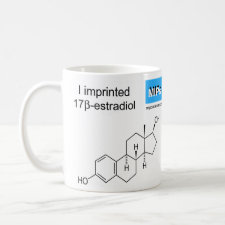
Authors: Jing LJ, Zhang QW, Wang Y, Wei TX
Article Title: Determination of Estradiol by Surface Plasmon Resonance Using a Molecularly Imprinted Film.
Publication date: 2016
Journal: Analytical Letters
Volume: 49
Issue: (11)
Page numbers: 1696-1710.
DOI: 10.1080/00032719.2015.1119838
Abstract: A molecularly imprinted film was incorporated on a surface plasmon resonance sensor for the determination of estradiol. The nanometer-imprinted film was synthesized by a grafting approach. First, the gold sensor chip was modified using an iniferter of N,N-diethylaminodithiocarbamoylmethylstyrene to create the grafted surface. The molecularly imprinted film was grafted on the sensor by ultraviolet light-initiated copolymerization of methacrylic acid and ethylene glycol dimethacrylate in the presence of estradiol as the template. The template was removed to form a molecularly imprinted film with specific recognition sites for estradiol. This approach avoided self-aggregation in solution, and grafting polymerization was confined to the chip surface. The grafting was implemented with in situ monitoring by surface plasmon resonance that provided excellent control of the film thickness. Substrate surfaces modified with and without an estradiol-imprinted film were characterized by contact-angle measurements and scanning electron microscopy. The estradiol-imprinted film was incorporated on a surface plasmon resonance sensor for the determination of estradiol from 10-10 to 10-6 mol/L in phosphate-buffered saline. The lowest determined concentration was 10-10 mol/L. Testosterone was used as an analog; suitable selectivity and specificity were obtained for the determination of estradiol. Furthermore, this sensor possessed high reproducibility for analytical measurements
Template and target information: estradiol
Author keywords: estradiol, Molecularly imprinted film, surface plasmon resonance (SPR)



Join the Society for Molecular Imprinting

New items RSS feed
Sign-up for e-mail updates:
Choose between receiving an occasional newsletter or more frequent e-mail alerts.
Click here to go to the sign-up page.
Is your name elemental or peptidic? Enter your name and find out by clicking either of the buttons below!
Other products you may like:
 MIPdatabase
MIPdatabase









